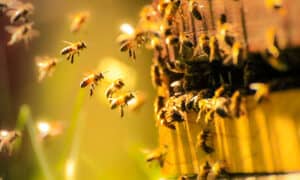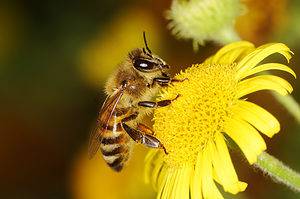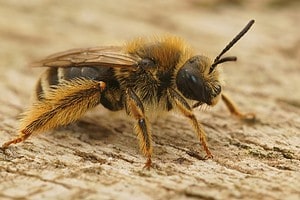Bees naturally inspire fear in people. Their stings can be painful or even deadly for those with allergies. However, bees are also pollinators, making much of our food and survival possible. How many bees do we need in the world for this to happen? And how many bees are in the world right now? Read on to discover these vital contributors to our planet’s ecosystems!
Types of bees
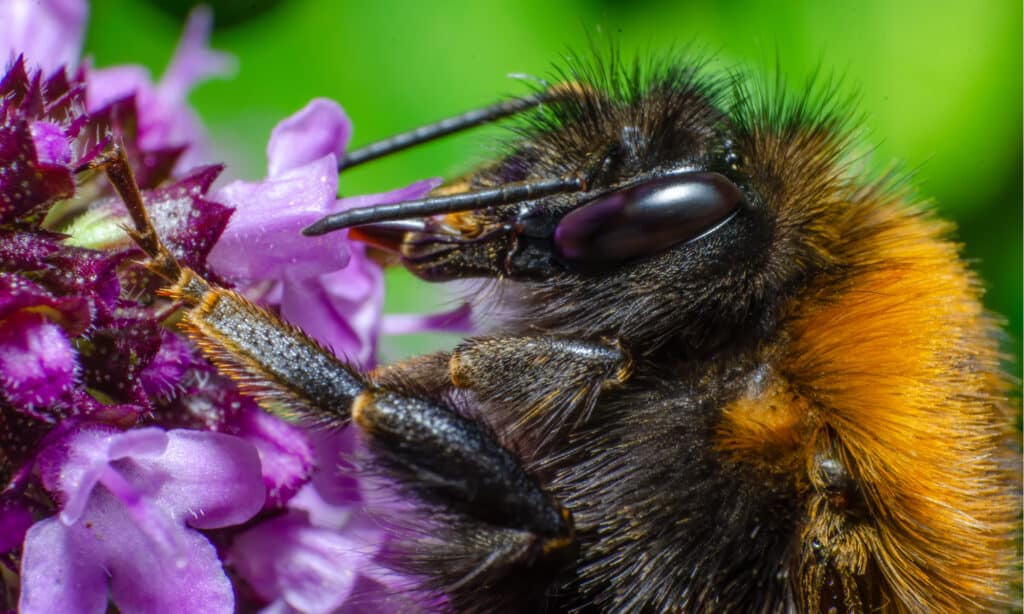
There are 7 recognized families of bees in the world.
©Edgar Rene Ruiz Lopez/Shutterstock.com
There are 7 recognized families of bees in the world: Apidae, Megachilidae, Halictidae, Colletidae, Melittidae, Andrenidae, and Stenotritidae. Apidae is the largest family of bees, with over 5,700 species. This includes the famous honey bees and bumblebees. Andrenidae is an example of a family entirely composed of solitary bees. Rather than live in hives, these bees nest on the ground.
How many bees are in the world?
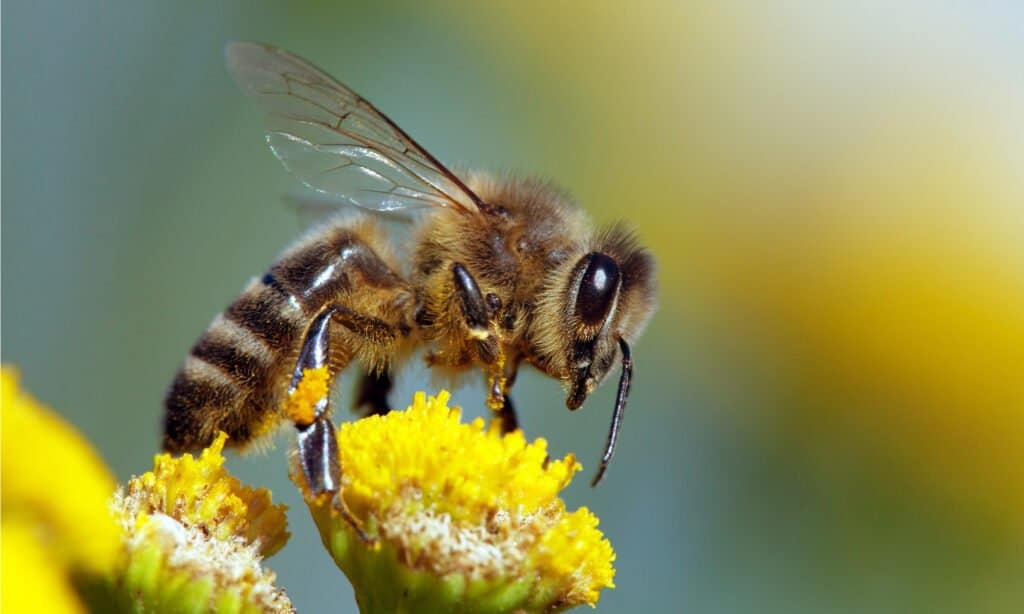
There are at least 2 trillion bees worldwide, divided into 7 families, and about 20,000 species.
©Daniel Prudek/Shutterstock.com
There are at least 2 trillion bees currently in the world. Estimates place the number of honey bee colonies worldwide at 81 million and the total number of managed beehives at about 100 million. Each hive contains anywhere from 10,000 to 60,000 bees.
There are approximately 20,000 bee species in the world. Some species in the United Kingdom and elsewhere have sadly gone extinct. Many species are only locally extinct but are threatened globally.
Where are bees found?
Wherever there are flowering plants, there will be bees. This means that there are bees nearly everywhere in the world. Recent distribution maps show high concentrations of bees in several arid, temperate regions of the world. The United States is a hotspot, especially the southwest states, as well as areas of South America and South Africa. Other isolated areas of Africa, southern Europe, and Asia show an abundance of bees and bee species.
Like most other plants and animals, bees are not found in Antarctica. For one thing, it is far too cold for them. For another thing, no flowering plants exist on the continent. Without those, bees can’t survive. For this reason, it is also rare to find bees in desert regions.
Bees’ social structure
Bees can be either communal or solitary. In communal settings, the queen bee reigns over the hive, which protects her. She produces broods, or groups of eggs, from which future queens are selected. These potential queens are fed a special diet of royal jelly to ensure they develop sexually. If the queen bee dies, one of them replaces her.
Males in communal settings mate with the queen bee to produce a brood. This is their only job. Once this is done, they either die or are forced out of the colony. Female drones, or worker bees, do the pollinating and collecting of honey.
Solitary bees are bees that naturally live by themselves. They have no hive or queen. They also do not produce honey, although they may pollinate flowers. There are over 200 species of solitary bees.
Bee diet and predators
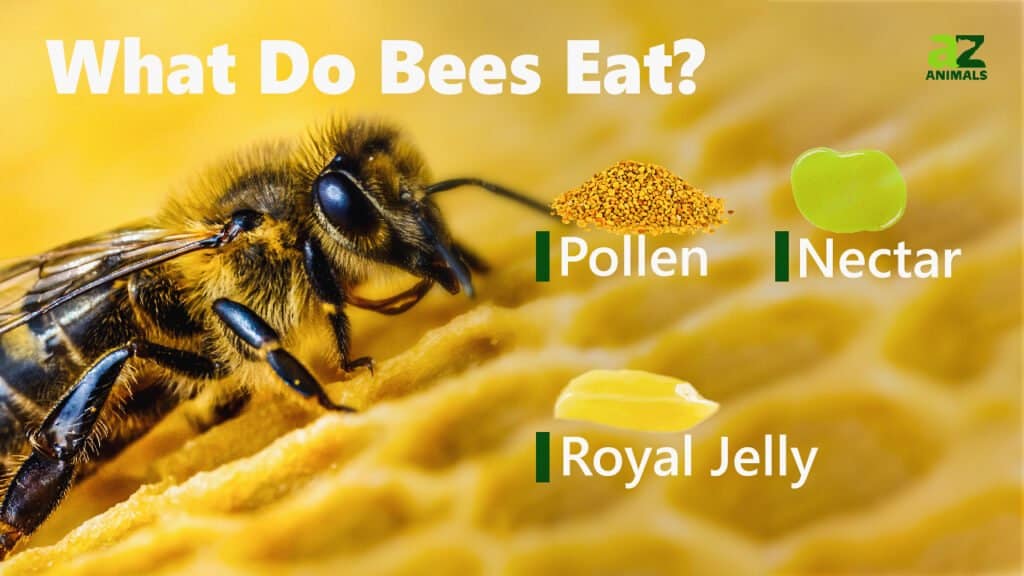
Most bees subsist on pollen and nectar collected by worker bees. However, some bees eat carrion and use it to produce honey, while one species even drinks human sweat!
Bees have several predators. Larger predators include bears, skunks, raccoons, and badgers. These animals will tear open a hive to get at the honey and brood. The brood has a high protein content and is very nourishing. Stings do not usually bother animals of this size.
Smaller predators include many species of birds like bee-eaters, woodpeckers, purple martins, and northern cardinals. Crabs will also pick off bees if given the chance.
Smaller yet are predacious insects like hive beetles, Varroa mites, or beewolves (a type of wasp). These wasps will attack a hive and overpower the honeybees, then lay their eggs on or around the corpses. This facilitates easy access to a source of food. Adult beewolves will attempt to keep the bees alive as long as possible so the food stays fresh. The Asian giant hornet, also known as the murder hornet, kills bees by decapitating them with their huge mandibles.
Which bees are dangerous?
Most bees sting, which is enough for some people to consider them dangerous. But aside from those allergic to bee stings, most won’t suffer more than temporary pain and minor swelling. However, some types of bees are genuinely dangerous to everyone – and some don’t sting at all!
The most dangerous bee in the world
The most dangerous bee in the world is the Africanized honey bee, also known as the killer bee. These are dangerous for a couple of reasons. First of all, their venom is strong enough to seriously harm, if not kill, a human. They have even been known to kill large animals like horses.
Second of all, killer bees are extremely aggressive, much more so than other species of honey bees. They will give chase for up to a quarter-mile if they perceive a threat. They are also disturbed much more easily, being highly reactive. In a swarm, they present a dire threat.
The stingless bee
Stingless bees, as the name suggests, do not sting. This makes it far easier for beekeepers to harvest their honey. However, the stingless bee is remarkable for another reason: some kinds make medicinal honey. This special kind of honey can be used to treat wounds and fight off infections. There are approximately 500 species of stingless bees worldwide, many of them in Latin America.
Pollination
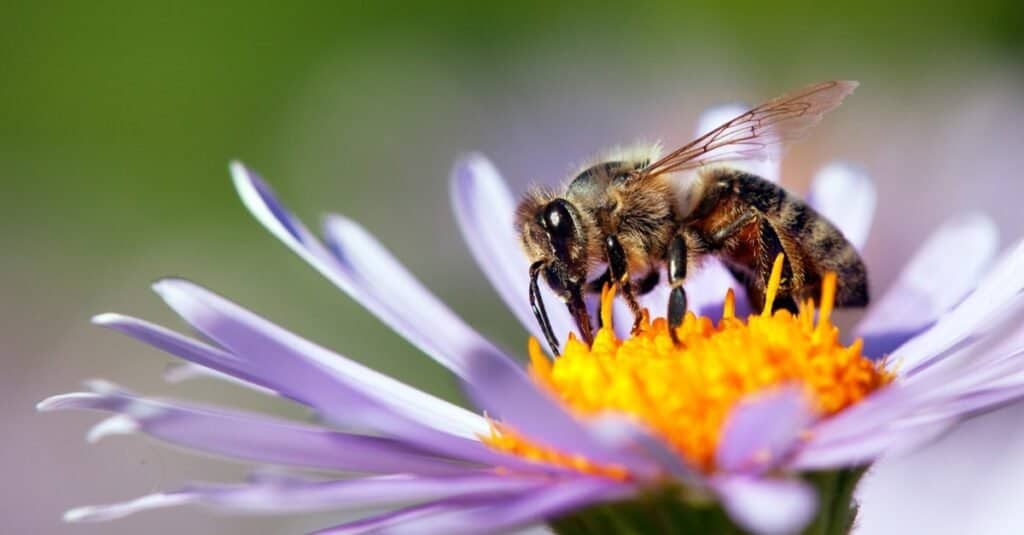
Bees are major worldwide pollinators of plants.
©Daniel Prudek/Shutterstock.com
About 90% of wild plants and 75% of crops rely on pollination. Without pollinators, almost all of the plant life in the world would die. And without plant life, all animal life would die too. Indeed, it isn’t easy to overstate the importance of bee pollinators to our existence on Earth.
Pollination is what enables plants to reproduce. But how does pollination work? First, a bee must land on a plant to gather nectar and pollen for the hive. Pollen from the stamens (the plant’s male reproductive organ) sticks to its body hair. The bee carries it to the next plant, where it rubs off onto the stigma (the plant’s female reproductive organ). This fertilizes the plant, which then can produce fruit and seeds.
Fascinatingly, honey bees have a special way of letting each other know where to find food. It’s called the “waggle dance.”
Are bees endangered?
Yes, bees are endangered. The honey bee garners the most attention because it is one of the most important pollinators in our world, but many other species are affected. In America alone, the number of bee colonies has dropped by almost 3 million over the past several decades.
Why are bees endangered? The most common reasons are habitat loss, chemical pollution, and parasites. Beekeeping has become more vital than ever as humans attempt to increase the number of bees in the world artificially.
Although the sight of a bee is frightening to many people, they are generally harmless to humans if not provoked. More importantly, they help to sustain us as they pollinate the plant life of our world.
The photo featured at the top of this post is © schubbel/Shutterstock.com
Thank you for reading! Have some feedback for us? Contact the AZ Animals editorial team.



